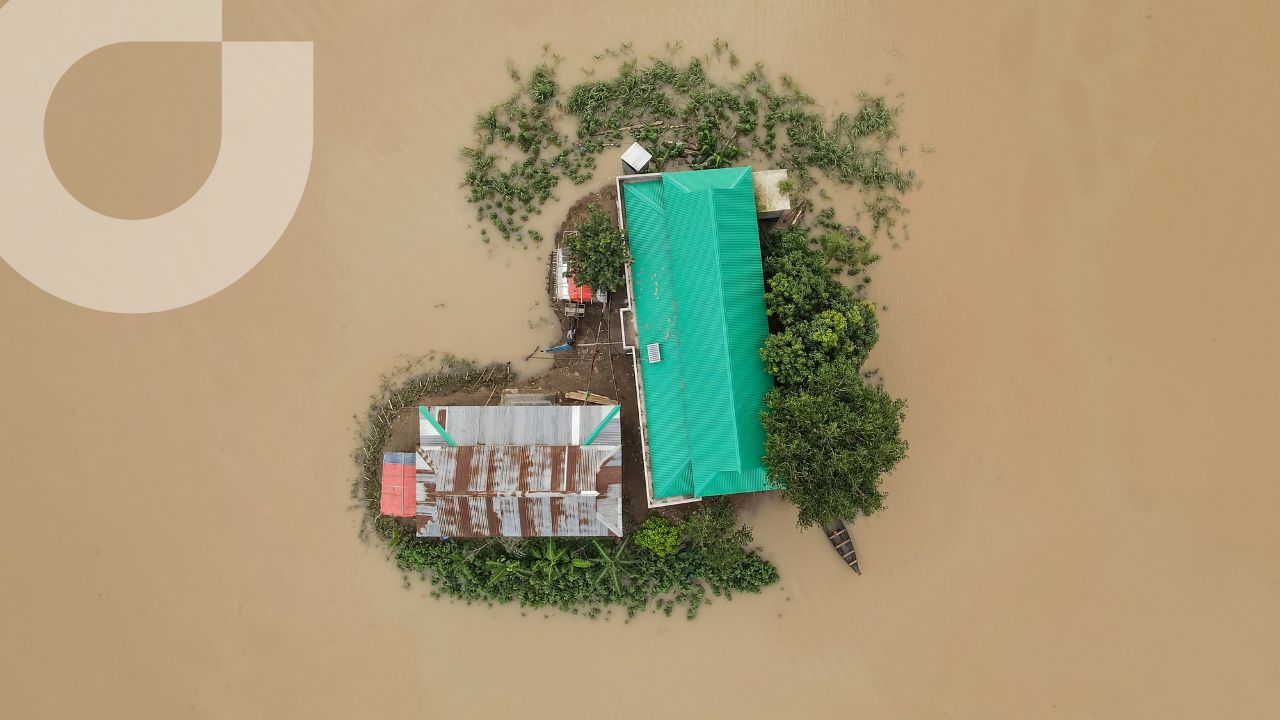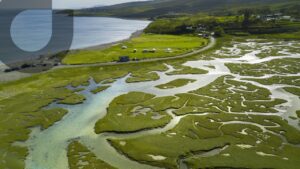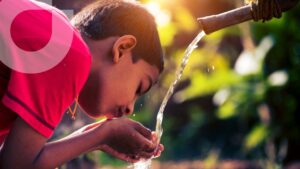Water and climate change are inextricably linked. The hydrological cycle is the medium through which climate change manifests most tangibly: intensifying droughts, exacerbating floods, and shifting precipitation patterns in ways that challenge human societies directly and through their impacts on ecosystems. Effective climate adaptation, therefore, is inseparable from sustainable water resource management.
The Adaptation Gap Report 2024 (AGR2024), released back in November 2024 by the United Nations Environment Programme (UNEP), underscores the growing urgency of adaptation efforts, highlighting financial shortfalls, implementation gaps, and the imperative for integrated water management. Addressing this gap requires a paradigm shift: integrating water governance into climate adaptation strategies as a fundamental enabler of resilience.
This article explores the bidirectional link between water and climate adaptation, underpinned by examples from Chile, Indonesia, and Japan, whose situation I am very familiar with.
The Water-Climate Nexus: Feedback Loops and Amplified Risks
Scientific consensus increasingly supports the view that climate change is fundamentally a disruption of the global water cycle. The AGR2024 actually reports that over two-thirds of adaptation finance needs are concentrated in sectors like water services, infrastructure, and agriculture, all sectors heavily reliant on water security.
Science shows how the global water cycle governs the movement of water between the atmosphere, land, and oceans. As greenhouse gas (GHG) concentrations rise, this cycle is significantly disrupted through:
- Increased evaporation and atmospheric moisture – the atmosphere holds approximately 7% more water vapour per degree Celsius of warming, intensifying storms, hurricanes, and atmospheric rivers.
- Changes in precipitation patrerns, leading to floods or prolonged droughts: the Mediterranean, western US, and some regions in South America are experiencing long-term drying trends, while monsoonal regions see erratic and extreme rainfall.
- Cryosphere and snowpack disruptions, mostly affecting regions dependent on glacial runoff (such as the Andes, Himalayas or Rocky Mountains), where the loss of seasonal snow disrupts water storage.
- Sea-level rise and coastal water dynamics, leading to saltwater intrusion into freshwater supplies, mostly affecting delta regions (Ganges, Mekong, Nile), which are hence vulnerable to increased salinty and the depletion of shallow coastal aquifers.
- Increased frequency and intensity of hydrological extremes. For example, the solid evidence of more frequent megadroughts, such as those in Australia, California or Chile.
Bridging the Gap: Sustainable Water Management as Climate Adaptation
Adaptation strategies must place water security at the core. AGR2024 highlights that climate-proofing water infrastructure, improving forecasting systems, and investing in nature-based solutions can significantly enhance resilience, but sustainable water resources management as a whole is an imperative for enhanced adaptation. Yet, financing remains a major hurdle; while international public adaptation finance flows reached $27.5 billion in 2022, the estimated annual adaptation need ranges between $215 billion and $387 billion (8 to 14 times more), leaving a massive gap.
Evidence of Water-Based Adaptation amd Drawbacks
Chile: Managing Water Scarcity
Chile’s reliance on glacial meltwater makes it highly vulnerable to climate change-induced water stress. The Government of Chile adopted back in 2014, under the presidency of Michelle Bachelet,a national adaptation plan emphasising integrated water resource management (IWRM), reservoir expansion, and desalination projects. However, as AGR2024 points out, adaptation efforts require better financing mechanisms to ensure long-term water security. Further, that national plan can arguably said to be oudated: since then a 15-year mega-drought and a Framework Law on Climate Change (2022), among other things, have changed reality.
Indonesia: Climate-Resilient Water Infrastructure
Indonesia, the world’s largest archipelagic state (with 17,508 islandsw), is grappling with rising sea levels and shifting rainfall patterns. Jakarta’s $40 billion National Capital Integrated Coastal Development (NCICD) project, approved in 2014 and with sslow and fragmented implementation, aims to protect Jakarta against coastal flooding. Jakarta is one of the fastest sinking cities in the world, with some areas subsiding by up to 25 cm per year due to groundwater overdraft. This, combined with rising sea levels, makes the city highly vulnerable to flooding. The AGR2024, though, stresses that while large-scale infrastructure is crucial, investments must be complemented by community-based water governance and ecosystem restoration, including halting groundwater overabstraction, which may demand new supply sources.
Japan: Disaster Preparedness and Adaptive Management
Japan has a long history of disaster resilience, with sophisticated flood control systems and early warning mechanisms. The country’s Super Levee initiative, combined with adaptive urban planning, aligns with AGR2024’s recommendation for integrating systemic adaptation approaches that balance technological and natural solutions. The Super Levee initiative was developed to enhance resilience against extreme river flooding and storm surges. Unlike conventional levees, which are narrow embankments, super levees are broad, gradually sloped, and integrated into urban landscapes, thus allowing for urban development on top of the leve
Policy and Investment Recommendations
To align with AGR2024’s findings, the following policy directions are critical:
- Scaling public finance: Governments must increase budget allocations for water-based adaptation, particularly in vulnerable regions. A central theme in AGR2024 is the stark gap in adaptation finance. Water-related adaptation is particularly underfunded, despite being a cornerstone of resilience. The report finds that only one-third of adaptation finance flows to areas where private sector investment is viable, such as commercial water infrastructure. Public funding must bridge the remaining gap.
- Blended finance models: Leveraging public-private partnerships (PPPs) can de-risk investments in water infrastructure and attract private capital.
- Nature-Based Solutions: Wetlands restoration, watershed conservation, and reforestation should be prioritised to enhance water retention and flood mitigation.
- Improved governance and data systems: Strengthening climate risk assessments, integrating adaptive water policies into national planning, and ensuring cross-sectoral cooperation.
- Capacity building and local engagement: Recognising and empowering local communities to play a central role in adaptation planning.
A Call for Integrated Action & Cost Estimates
The IPCC estimates that limiting global warming to 1.5°C necessitates annual investments of approximately $2.4 trillion in the energy system between 2016 and 2035. UNEP reports that adaptation costs in developing nations, in turn, are currently estimated at $70 billion annually. This figure is expected to rise to between $140 billion and $300 billion per year by 2030 and between $280 billion and $500 billion per year by 2050. The UN Conference on Trade and Development (UNCTAD) projects that achieving climate change goals, including mitigation and adaptation efforts, will require overall nearly $5.5 trillion annually from 2023 to 2030 for developing economies. However, it’s important to note that these estimates can vary based on factors such as baseline assumptions, policy implementations, technological advancements, and the extent of global cooperation.
Water security and climate adaptation are mutually reinforcing imperatives. The case studies of Chile, Indonesia, and Japan, illustrate the diverse challenges and solutions shaping global adaptation efforts. Yet, as the Adaptation Gap Report cautions, fragmented approaches and underfunding persist. To build climate-resilient societies, water governance must be embedded at the core of adaptation strategies. Only by prioritising sustainable water resource management can we navigate the dual crises of water security and climate change.
United Nations Environment Programme (2024). Adaptation Gap Report 2024: Come hell and high water — As fires and floods hit the poor hardest, it is time for the world to step up adaptation actions. Nairobi. https://doi.org/10.59117 /20.500.11822/46497







